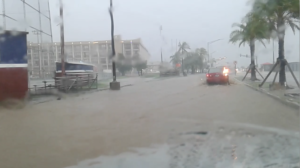
Most homeowners are familiar with standard insurance policies that cover damage to their home and property, but most of those policies do not typically cover flood damage. Just one inch of water in a home could cost more than $25,000 in damage. Homeowners, renters and businesses can purchase the protection they need to recover more quickly by having flood insurance.
After hurricanes Irma and Maria, 221 flood insurance claims resulted in payouts of more than $20 million in the U.S. Virgin Islands. Flood insurance will pay claims regardless of whether or not there is a Presidential Disaster Declaration. Federal disaster assistance comes in two forms: a loan, which must be paid back with interest, or a Federal Emergency Management Agency (FEMA) disaster grant, which is about $5,000 on average per household. By comparison, the average flood insurance claim in 2018 was more than $40,000.
If interested in acquiring flood insurance, contact an insurance company to learn what the policy covers. If the insurance agency does not provide flood insurance, call the National Flood Insurance Program at 1-877-336-2627 to explore coverage options. The time to insure a property is now. It typically takes up to 30 days for a policy to go into effect so the time to buy is well before a disaster.
If a person has flood insurance, make sure it is up to date and covers any new purchases and improvements that have been made since acquiring coverage. It is not a good thing to find that you are underinsured after a disaster.
Take pictures of the home, other buildings on the property and the contents of the home, including not only furniture and appliances but all items. Store this photo inventory along with serial numbers, manufacturer and model details, etc. in a location that can be easily accessed after the flooding. It’s a good idea to save this information as well as the insurance agent’s contact information on a thumb drive kept in a watertight container with other important documents.
Learn more about flood protection by visiting www.floodsmart.gov.


